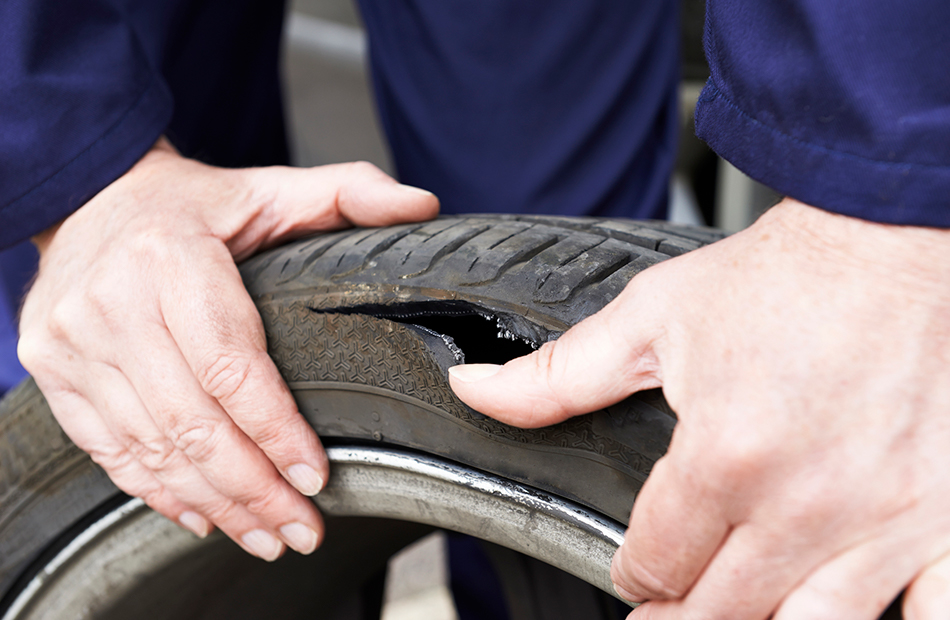Get this deal! Call now.
Speak with a vehicle protection plan specialist and get $300 off any new contract instantly.
Call 866-678-4172
or scan the code below


Owning a vehicle can open up a world of possibilities during the winter months. From traveling to and from work, the store or anywhere else, you can take comfort in knowing you won’t be stuck in the cold weather waiting for public transportation or paying for a rideshare service.
While having your own car, truck or SUV can give you new freedoms; there are also new responsibilities that come with it apart from filling up the gas tank, getting an oil change, or the occasional car wash. Following your car’s recommended maintenance schedule is the most important thing you can do to help ensure your vehicle stays running properly for longer.
For those living in areas with harsh winter weather, following your vehicle’s maintenance schedule and recognizing some of the most common repairs you can expect this time of year is vital to getting your vehicle ready for the season ahead.
Regular car maintenance is essential for any vehicle, regardless of the time of year. Still, the extreme cold your vehicle experiences during this time of year can put extra strain on it, potentially causing premature damage to your vehicle and its components. If left unchecked, these issues could eventually lead to more costly and unexpected breakdowns down the road.
Ensure your vehicle is safe from the harsh winter conditions with these top winter car repairs you can prepare for:

With hazards such as ice, snow and debris often in the roadways during winter, it’s important to have tires that are up to the challenge. This includes checking the tire tread depth to ensure you’re getting as much traction as possible. You can even take it a step further and purchase a set of new tires. More specifically, snow tires (or winter tires) can help give you the best overall traction and control, though many all-season tires can still be viable options for winter driving. Regardless of what tires you use on your vehicle, ensuring they are free of any damages or excess wear can help make the difference between a smooth ride and an unexpected flat or tire blowout. Depending on the make/model of your vehicle, as well as the quality of tires you choose, you could be left paying hundreds of dollars per tire.
What to do: One of the most common causes of tire issues during the wintertime is not having the proper air pressure (PSI) in the tires. This is because air molecules condense in cold weather, taking up less space in your tires. To help avoid this issue, check your tire pressure often, especially on days when there is a drastic drop in temperature. You should also keep up with your car’s recommended tire rotation schedule to prolong the life of your tires, as it can help them wear evenly. Refer to your owner’s manual to learn more about your car’s recommended tire rotation schedule or tire pressure.
During the wintertime, your car battery works harder to produce power, leading to problems later. Now will also be the time when any issues caused by the scorching summer heat may start to appear in the cold weather. Batteries of vehicles left in storage can also lose their charge. If you find yourself needing a new battery, the make/model of your car will determine how much a battery replacement will cost you. For example, as of November 2022, Ford F-150 owners can expect to pay between $213 and $222 for a new battery, while Honda Accord owners can expect to pay between $191 and $199.
What to do: The first thing you should do is get your car battery checked by either a licensed repair shop or ASE Certified mechanic. You can also purchase a home tester kit if you want DIY maintenance to help prepare your car this winter. If your battery test shows it lacks a sufficient charge, replace it now instead of waiting for a potential failure later. If you are storing your vehicle, keep the battery alive by starting the engine every now and then.
Working breaks are a must-have during winter due to the reduced visibility and slicker roads caused by ice and snow. If your brake pads are overly worn, your car will require even more distance to come to a complete stop, increasing your chance of being in an accident. By having a certified facility or repair professional inspect your brake pads, you can be sure nothing is left to chance when staying safe on the roads this winter. If your brake pads need to be replaced, you can expect to pay upwards of $287, depending on your vehicle’s make and model. Additionally, while putting you at a greater risk for an accident, failing to replace overly worn or faulty brake pads can also lead to issues with your brake rotors, which will cost you upwards of $367 to replace, along with the cost of replacing your brake pads.
What to do: As one of the most important safety features of any vehicle, it’s always recommended to let a certified repair facility or professional replace your brake pads. With that said, you can still listen for the telltale signs of brake pad wear, such as a grinding or squeaking noise when braking. You may also notice other issues, such as the brake pad feeling spongy or taking longer distances to stop (in dry conditions). You can also physically check your brake pads by seeing if they are worn below 3/32 inches. If they are, it’s time to replace them.
A fully functioning set of spark plugs is needed to ensure your engine starts and runs smoothly. This is especially vital during winter, as colder temperatures make ignition more challenging. Some of the most common signs of faulty spark plugs are decreased fuel economy, engine misfirings, or failure to start. You may even see more exhaust fumes.
If you are experiencing issues with your vehicle’s spark plugs, you can change them at home in a few simple steps. However, if you’re uncomfortable doing so, visiting your local mechanic is recommended, though this can cost you $205 and $263.
What to do: If you’re having trouble starting your car’s engine or are experiencing juddering or increased exhaust fumes, you might have faulty spark plugs. If so, visit an auto repair facility or reference your vehicle’s owner’s manual to learn how to replace your spark plugs at home.
If you own a manual transmission and notice a burning smell coming from it, are experiencing a sticky or spongy clutch pedal, or notice a gear slipping, you may have issues with your clutch. If so, you should take your car to be seen by a licensed repair facility or certified professional as soon as possible to avoid any further (and expensive) damages, as replacing a faulty clutch as of November 2022 can cost over $1,450! Not to mention that a faulty or damaged clutch can often result in premature damage to other components, adding to an already expensive repair bill.
What to do: The clutch is typically a very durable component, but it does wear over time and will eventually need to be replaced. During the winter months, the extra strain of colder temperatures and the potential for more frequent gear shifting due to winter driving can often lead to clutch issues. To help limit this extra stress, avoid riding the clutch to help prolong its life. Staying up-to-date on your car’s maintenance schedule can help extend the life of your car’s clutch.
A car’s timing belt is crucial in helping to keep your vehicle running without issues. Specifically, your timing belt synchronizes your camshaft (the component that moves your engine’s valves) and your crankshaft (what moves the engine pistons).
Like other heavily used components of your vehicle, your timing belt can become worn from the friction and heat generated by the car’s engine, resulting in potential cracking. If the timing belt eventually breaks completely, you’ll know about it instantly, as your car’s engine will either stop or immediately see a drastic loss of power. While cheaper than replacing a faulty clutch, replacing a worn or broken timing belt can still be costly, with costs going as high as $773.
What to do: The best way to avoid any significant timing belt damage is to adhere to the recommended maintenance instructions in your owner’s manual. Here you can find the intervals to change the timing belt and make sure its condition is checked as part of your essential routine maintenance. If you notice that your timing belt is near or past the replacement date, there is a good chance that it’s becoming brittle, and the extra heat in the hard-working engine in winter can push it to its breaking point.
Following your car, truck, or SUV’s recommended maintenance schedule combined with general know-how and car care tips can help avoid unexpected and costly repairs, but they can’t prevent them all. Luckily, with an Endurance auto protection plan, you can find comprehensive coverage for your vehicle to fit your specific needs and budget. So whether you’re looking for basic powertrain coverage starting as low as just $79 a month or near-complete converge for almost every part of your vehicle, Endurance is here to help. Some plans, like Advantage, can even help protect your vehicle while helping you save on your car’s yearly maintenance needs.
Endurance customers can also enjoy complimentary 4/7 roadside assistance, trip interruption coverage and rental car reimbursements, regardless of their plan. But that’s not all, as all new customers get immediate access to a year’s worth of FREE Elite Benefits with any Endurance protection plan. These Elite Benefits include several great perks and extra savings, such as tire repairs and replacements, key fob replacements, and more, so you can rest easy knowing Endurance has you covered any time of the year.
To learn more about how Endurance can help protect you and your vehicle, call us at (800) 253-8203 for a FREE quote or shop online today. Be sure to also visit the Endurance blog to find even more helpful and informative articles on various automotive topics, including expert auto tips, vehicle buying guides, and more.

We're here to make sure you get the most comprehensive EV protection. That's why we've partnered with Xcelerate Auto to offer you transparent and dependable Tesla coverage.
Want us to contact you about XCare coverage for your Tesla?



Call for $300 off any new plan!
By clicking the button, you consent to Endurance using automated technology to call, email, and text you using the contact info above, including your wireless number, if provided, regarding auto protection or, in California, mechanical breakdown insurance. You also agree to the Endurance Privacy Policy and Terms and Conditions. Consent is not a condition of purchase, and you can withdraw consent at any time. Message and data rates may apply.
Speak with a vehicle protection plan specialist and get $300 off any new contract instantly.
Call 866-678-4172
or scan the code below



Simply fill out the information below and we will follow up fast with your free no-obligation quote.
By clicking the button, you consent to Endurance using automated technology to call, email, and text you using the contact info above, including your wireless number, if provided, regarding auto protection or, in California, mechanical breakdown insurance. You also agree to the Endurance Privacy Policy and Terms and Conditions. Consent is not a condition of purchase, and you can withdraw consent at any time. Message and data rates may apply.

To speak to a vehicle protection plan specialist and save $300
Scan the code below
As both an Army Veteran & ASE Certified repair shop owner, Andrew has made educating the modern driver an ongoing mission since the opening of his repair shop, Midwest City Autospa, in 2012. Read more about Andrew.